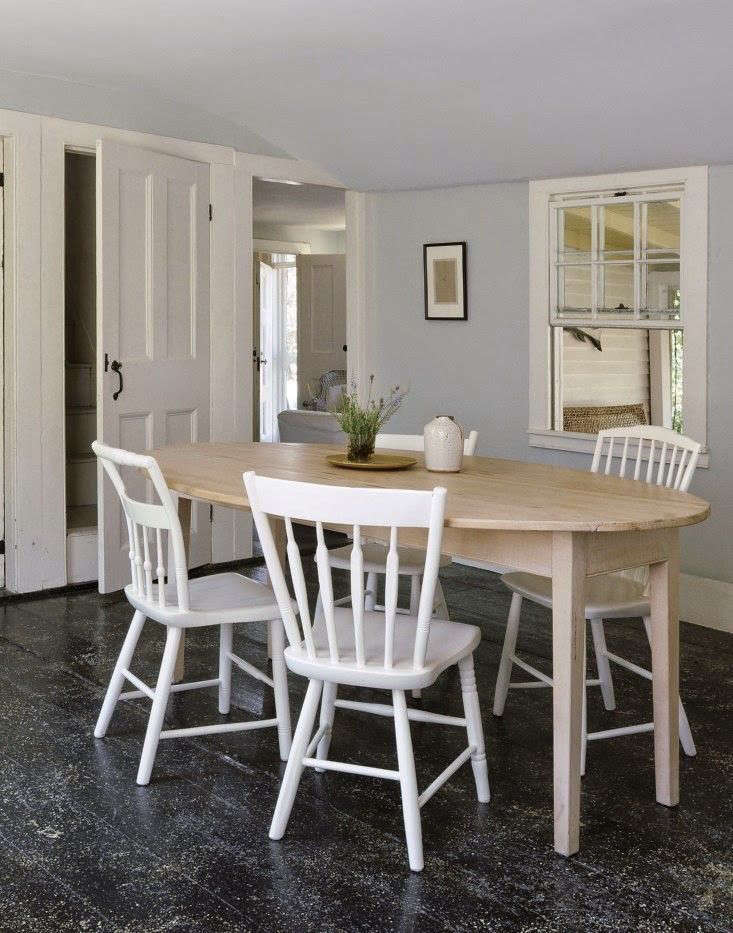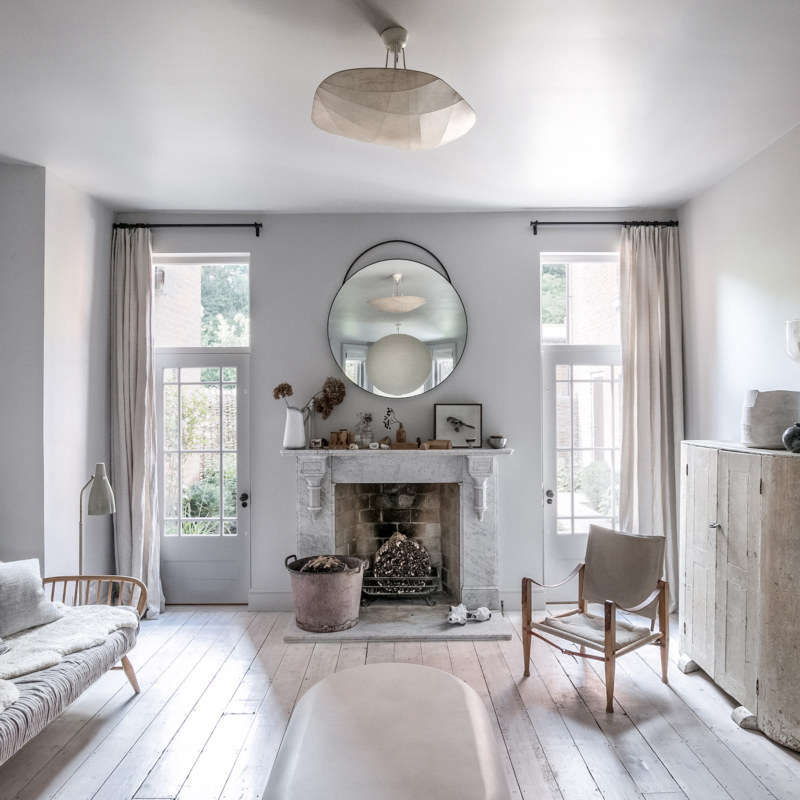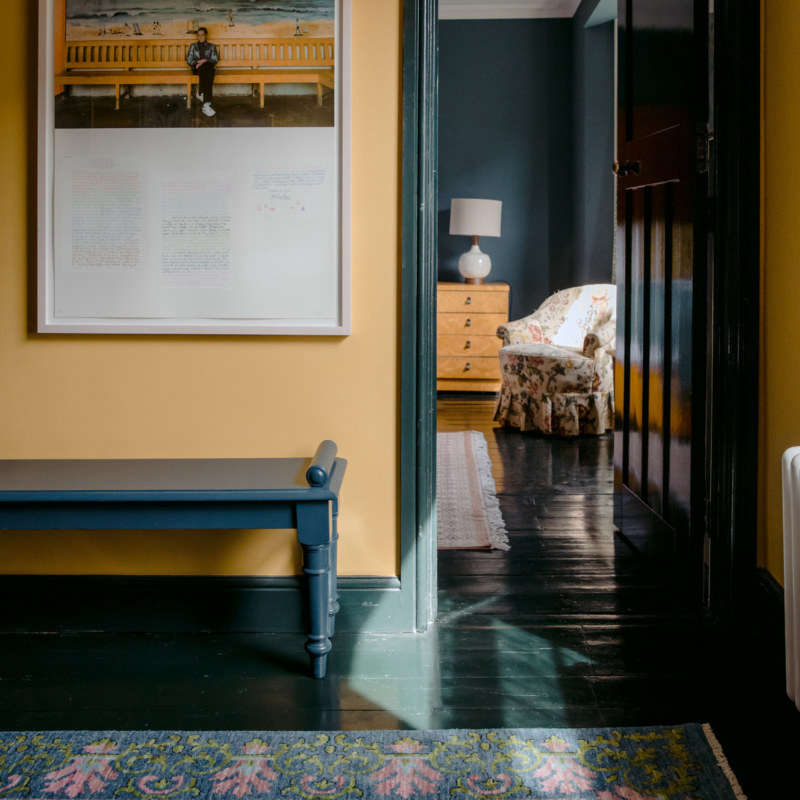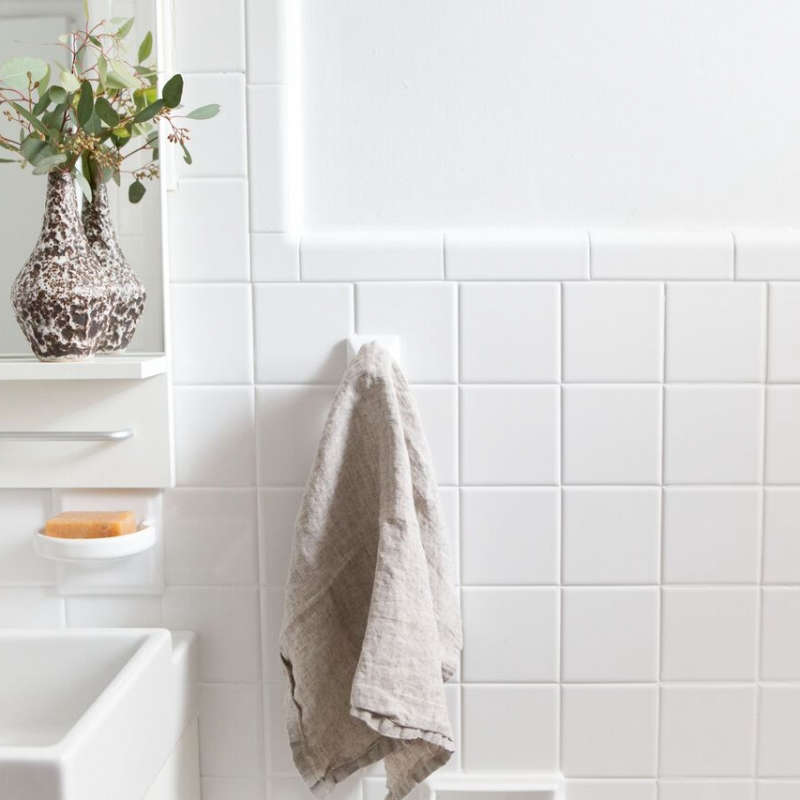Here on Cape Cod, splatter- or spatter-painted floors are so common that we take them for granted. I don’t know why our Victorian area ancestors started spatter-painting their floors—perhaps they couldn’t afford rugs, or more likely, they didn’t want to constantly beat the sand out of them—but I, for one, am glad they did. First of all, spatter-painted floors hide a multitude of sins; almost nothing shows up on them. But more important, they are simply beautiful. They’re a wonderful way to add texture and interest while still keeping the overall look minimal and clean.
Creating your own spatter-painted floor is easier than it looks; all that’s required is paint (here’s a chance to use leftover cans sitting in the garage) and a couple of long bristle brushes or plastic forks—anything you can flick, even a handheld broom will do. Gloves are also recommended. Luckily, the important thing is not perfection. For best results, you want random globs and clusters in myriad sizes, not a uniform spread. But be careful not to overdo it. Think small galaxies in the night sky, not Jackson Pollock.
N.B.: To see more, go to The Soulful Side of Old Cape Cod: Justine’s Family Cottage.





See also: Trend Alert: 10 Ways to Decorate with Paint Splatters and 10 Things Nobody Tells You About Painting Floors. And for more New England quirk, see our posts:
- The Soulful Side of Old Cape Cod: Justine’s Family Cottage
- An Artist’s Cottage in Truro, MA, Gets an Overhaul from a Boston Design Duo (Ikea Included)
- Bathroom of the Week: John Derian’s Homage to Old Cape Cod
N.B.: This story has been updated update; the original post ran on November 12, 2015.






Have a Question or Comment About This Post?
Join the conversation